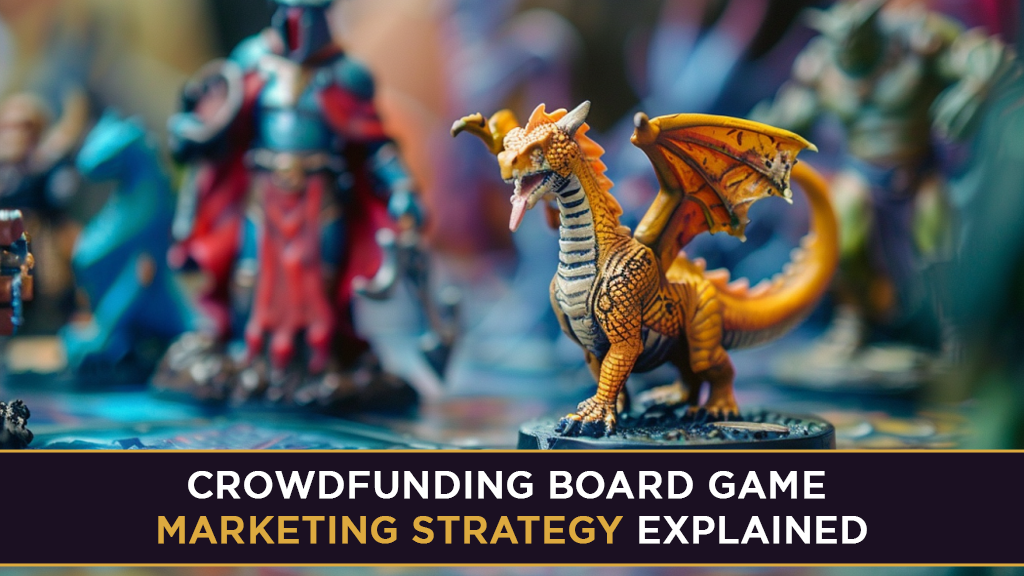
Amy and Dustin are high school sweethearts, flower farmers, and self-proclaimed “certified nerds”. In December 2022, they came to us with an idea: Botany, a board game combining Victorian-era intrigue, madcap adventures, and beautiful floral specimens.
We knew it was an exciting time for games. Games make up 31% of all funds raised on Kickstarter. And the global board game market is projected to grow from $13.6 billion in 2023 to $26 billion by 2030.
We’d never launched a game before. But we had a proven marketing strategy, one that worked for hotels, entertainment, eBikes, and much more. Why not test our metal on tabletop games?
Botany shattered its funding goal in 16 minutes. By the end of our campaign, we’d raised $1,057,307 in total pledges.
Shortly after, we raised $422,809 for Alpha Clash. And then $781,450 for Bear Mountain Camping Adventure. And then $4,020,234 for The Crooked Moon, now the most funded 5e Kickstarter of all time.
It became pretty clear our system was built for games. We launched LaunchBoom Games, a program dedicated to helping creators crowdfund and launch board games, and we joined forces with over 100 creators.
Do you have an idea you’re itching to bring to life? Let’s talk through your board game marketing strategy:
- Benefits of developing a marketing strategy for your board game
- Strategies for marketing board games
- Case studies of marketing strategies for board games
Contents
Benefits of a marketing strategy for your board game
The board games market is growing, but it’s also extremely saturated. Each year, there are over 3,000 new game releases. And there are over 150,000 different board games on BoardGameGeek right now.
A dedicated marketing strategy helps you stand out from the crowd. Your goal is to:
- Increase brand visibility and recognition
- Build engagement and community
- Boost crowdfunding success and pre-orders
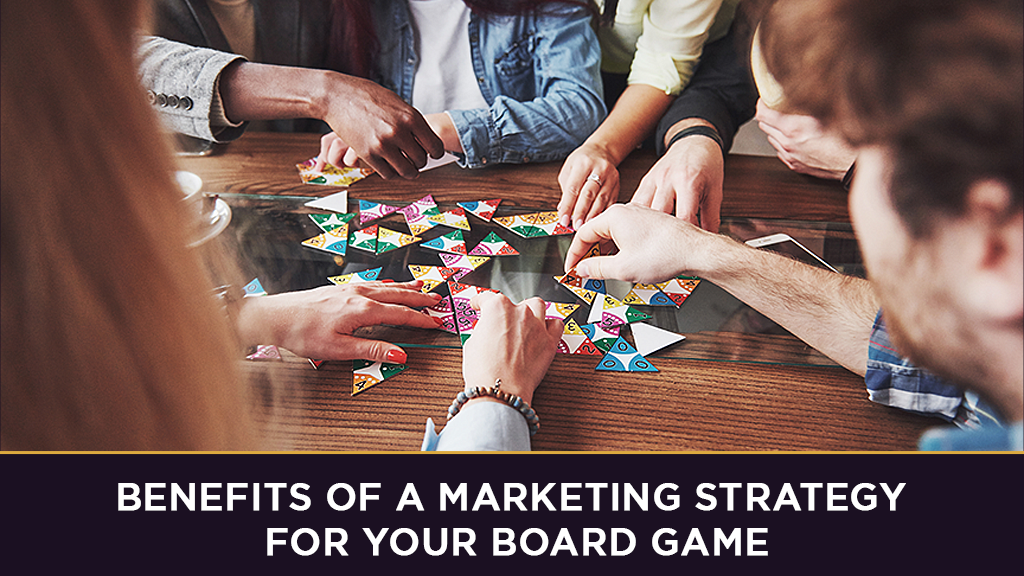
Brand visibility and recognition
Have you ever asked for a Kleenex? Or needed a Band-Aid? Or cooked in a Crock-Pot? Perhaps what you really meant was a tissue, bandage, or slow cooker. That’s brand marketing at work.
The same thing applies in board games. When describing Gloomhaven to new players, you might say, “It’s like DnD, but without a DM.” Or when describing Cards Against Humanity: “It’s an adult version of Apples to Apples.” We reference a more familiar game, because it carries pre-existing meanings and associations.
A brand is ubiquitous and consistent. Unlike a product, it can’t be bottled or packaged. It occupies space in the consumer’s mind and evokes certain images, feelings, and thoughts.
Marketing boosts your brand visibility and recognition. When customers know who you are and what you stand for, they are much more likely to click “Back this project” or reach for your game on the shelf.
More engagement and community building
Community is integral to crowdfunding. Backers, particularly board game backers, are some of the most passionate, engaged buyers in the consumer market.
Use marketing to identify your highest quality leads, build a core audience, and nurture your community. A loyal community is 30x more likely to buy and will stick with you after your crowdfunding campaign is long over.
Boosting crowdfunding success and pre-orders
The first 24 hours of your campaign are critical. Kickstarter and Indiegogo both have ranking systems. The more popular your campaign, the more likely it hits on the front page.
To boost popularity, you need substantial traffic right at launch. And to generate traffic, you need an effective pre-launch marketing campaign. Marketing creates the initial push, gets you in front of more eyes, and drives the momentum for the rest of your campaign.
How to build a board game marketing strategy?
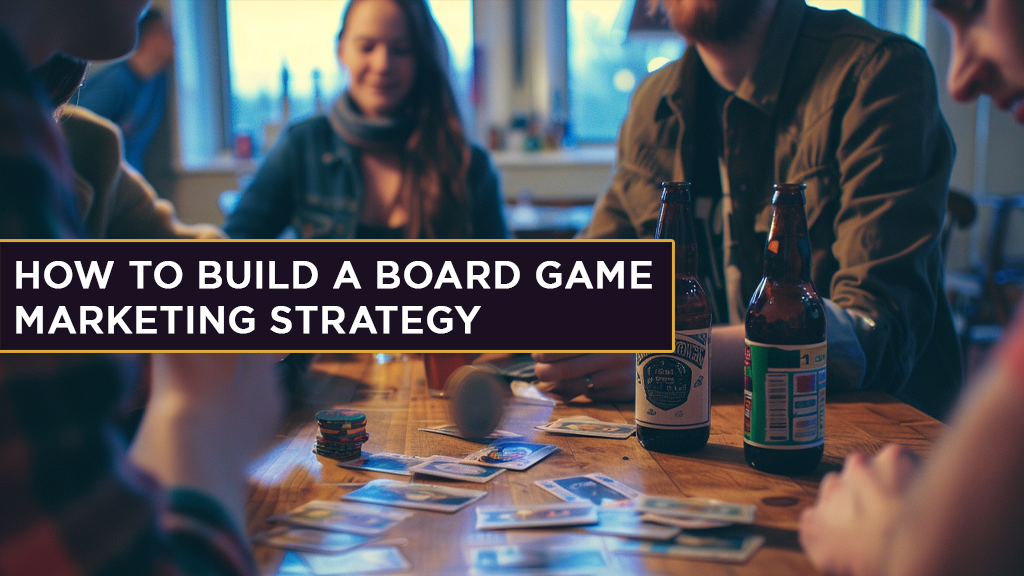
So you need a marketing strategy for your board game. Where do you start? There are three major components to building a successful marketing campaign:
- Identifying your target audience
- Crafting your core message and brand identity
- Choosing the right channels for promotion
Identifying your target audience
Marketing starts with knowing your target audience. To identify your audience, ask yourself:
- Why did you make this game?
- Who is your superfan?
Why did you make this game?
Before you can understand who will like your game, it’s helpful to know why you like your game.
Let’s go back to Amy and Dusty. Why did they create Botany? Amy is super into gardening and studied flower farming. She and Dusty owned a lavender farm and created customer flower presses. Amy loves vintage design and Victorian-era stories; she’s a sucker for British TV dramas and everything Jane Austen.
They love games; they grew up on Magic, Battletech, Dominion, Small World, Munchkin, you name it. But there was a problem. Amy enjoyed hosting, and the games she owned were too confusing, took too long to teach, and didn’t thematically appeal to her friend group.
The end result? Botany is an amalgamation of all of Amy’s favorite things: pretty flowers, Victorian lore, vintage artwork. And it’s a direct solution to Amy’s problem; it’s easy and fun to teach to a non-gaming friend group.
Now think about your own game. What inspired you? What are your gaming pet peeves and your non-negotiables? Which of your hobbies and interests are reflected in your game? What frustrations do you have with the status quo?
Once you determine the “why” behind your game, you’re one step closer to identifying your superfan.
Who is your superfan?
Take all those reasons you just listed for why you created your game, and combine them into one imaginary person. This is your superfan — the ideal customer that is most likely to buy and enjoy your game.
Here’s what Amy and Dustin came up with for Botany:
Age range: Mid 30s
Gender: Female
Interests: Gardening, hosting hangouts, collecting pretty things,reading Jane Austen
Wants/Needs: Pretty design, has flavor/personality and strong lore, can play in friend group, high quality materials, can play again and again
Frustrations with current games: Too complicated, confusing, difficult to learn, too random, hard to teach, doesn’t resonate with her friend groups
You might be thinking, “This superfan looks a lot like Amy!” You’d be absolutely right. If you’re struggling to define your superfan, go back to the question, “Who did I make this game for?” Is it for yourself? For your partner who doesn’t usually like games? For your friend group to play when they come over? Often, your superfan is super close to home.
Crafting your core message and brand identity
You’ve identified your audience. Great! But even the biggest superfan isn’t going to buy all on their own. The next step is positioning your game as a product that fulfills their needs.
To craft your core message and brand identity, use the Consumer-Based Brand Equity (CBBE) pyramid.
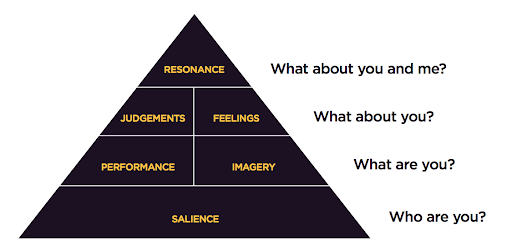
The underlying principle of CBBE is that you don’t own your brand, consumers do. Your brand is something that lives in their mind. To understand what your product is and why it matters, put yourself in the consumer’s shoes.
First, consumers want to know: What are you? This is salience. What kind of game are you? An immersive strategy game, an engine-building game, a party game? What’s the theme? High fantasy, science fiction, historical?
From there, consumers are curious: How do you do it? Performance is what makes you stand out from the competition. Do you have a unique game mechanic? A gripping story? Think about your key differentiators. Imagery ties into how people use your product. Think about your cover art, cards, and game pieces. A watercolor, pixel, or cartoon design each sends different clues on the game’s world, aesthetic, and style.
Next, consumers will ask: How good are you? Judgment has to do with credibility. What reviews have you gotten? What are influencers or playtesters saying about your game? Also think about what feelings you want players to experience. Should they be excited? Calm? Competitive? Are players relaxed like in Wingspan? Or are they shouting and aggressively bartering like in Catan?
And finally, consumers want to know: What about you and me? Resonance is why the consumer will enjoy a loyal, active relationship with your brand. It’s how you connect with backers, with your community, and with the rest of the world. This is where you tell your story. When backers resonate with you, they want to be part of your success.
Now put it all together! Here’s one of our top-performing ads for Botany. The ad showcases Botany’s beautiful flower imagery while laying out what Botany is, why it’s great, and why viewers should reserve now.
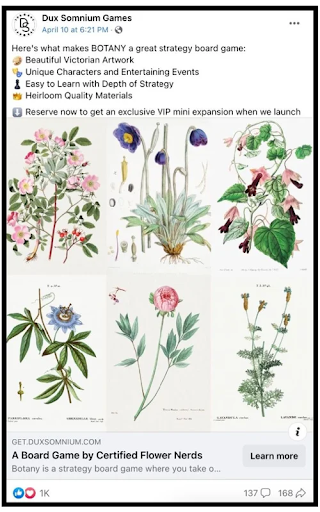
Choosing the right channels for promotion
You have your audience. You have your positioning. Now, you need the right marketing channels to bring the two together.
Start with online advertising. It’s a must for any crowdfunding campaign. And we’ll tell you straight up: Meta is your best bet. The return on investment (ROI) on other platforms like YouTube or TikTok don’t come anywhere close to the ROI we see on Facebook and Instagram. We recommend allocating 90% of your ad budget to Meta.
Use Meta ads to build a pre-launch reservation funnel. Here’s how the funnel works:
- Drive traffic: use Meta ads to drive traffic to a landing page.
- Collect leads: on your landing page, invite people to join your email list and get notified of when you launch
- Collect reservations: after users opt in to your email list, offer them the opportunity to “reserve” the best discount by putting down a $1 deposit.
You now have two types of leads:
- Non-VIPs — leads who joined your email list but didn’t put down a deposit
- VIPs — leads who joined your email list and put down a $1 deposit
Reservation funnels are extremely powerful. People who put down a $1 reservation are 30x more likely to buy. Once you’ve identified your core audience, your goal is to keep them engaged, passionate, and ready to buy.
6 Board game marketing strategy examples
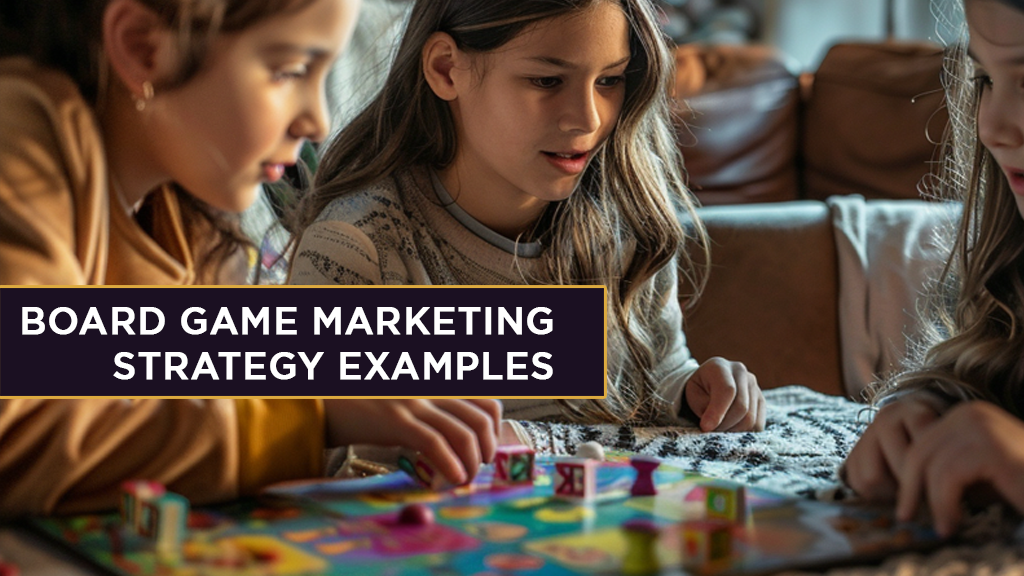
To maximize your marketing reach, attack from multiple fronts. Here are the top 6 platforms for board game marketing:
- Offline events
- Conventions
- Social ads
- Organic content
- Reviews
- Crowdfunding
Offline events
Board games are inherently social and face-to-face. It’s not surprising that offline events are especially impactful in board game marketing. Organize game nights, tournaments, and workshops at a local cafe or library. Create a space for fellow tabletop enthusiasts to meet, share their passion, and discuss your game.
How The Crooked Moon used offline events to build community
When Legends of Avantris broke Kickstarter records with The Crooked Moon, they knew it was time to celebrate!
The weekend of PAX Unplugged, Legends of Avantris hosted a party at Moriarty’s Pub. Guests enjoyed drinks at the bar, chatted with the creators, and engaged with other tabletop gamers. The event was a great reward for existing customers, and it gave new customers a compelling opportunity to learn more.
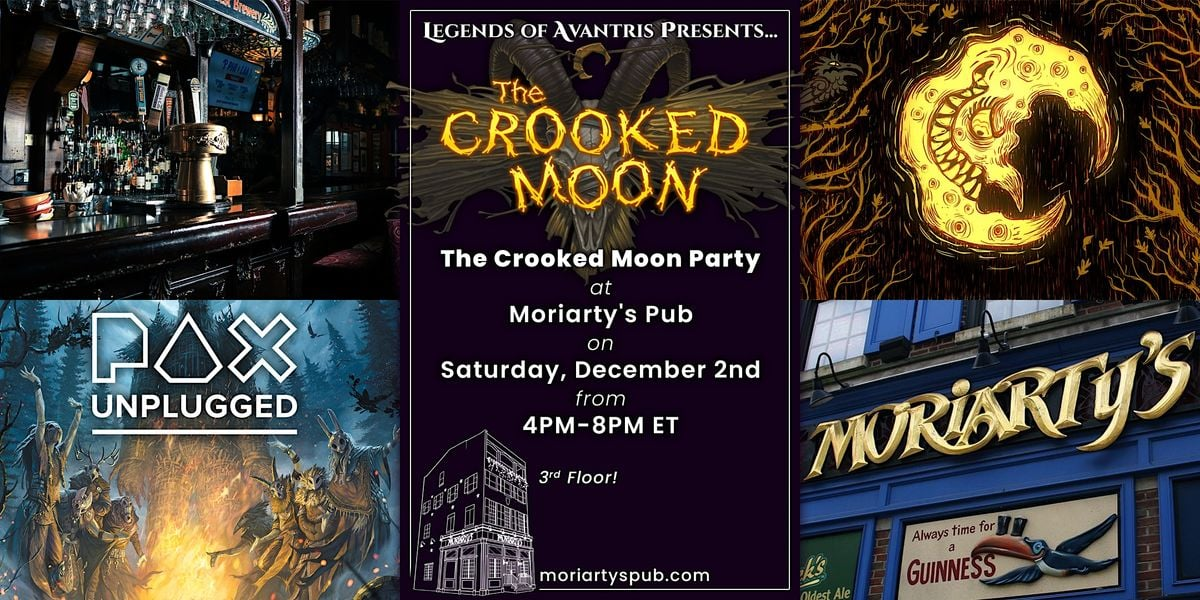
Conventions
Event marketing is huge in the gaming industry. It’s a valuable opportunity to interact directly with your target audience, network with industry professionals, playtest your game, gain media exposure, and get your logo in front of more eyes. To make yourself known in the gaming community, you want to hit some of these major conventions:
Why legends of avantris owns the conventions space for gaming
On top of their party, Legends of Avantris nailed their overall marketing strategy at PAX Unplugged with a hilarious live show and creator meetup.
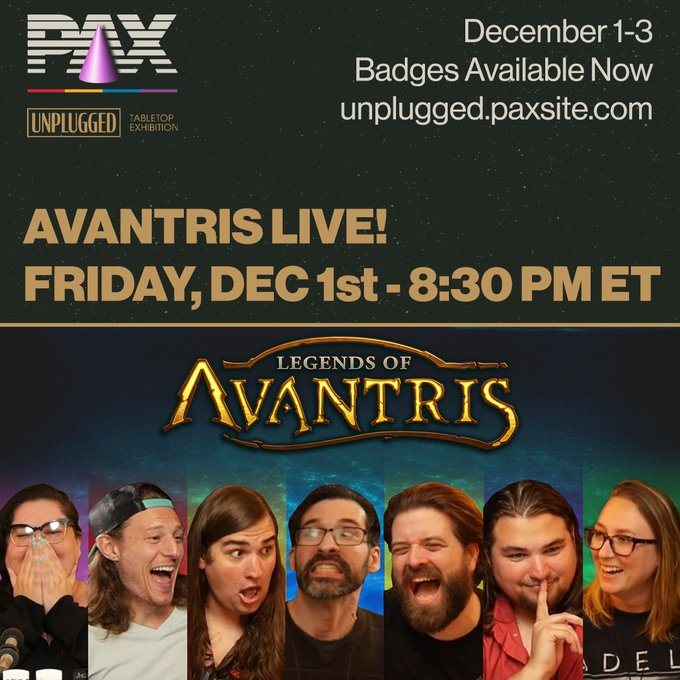
Story time, we were at PAX too. Our Senior Crowdfunding Consultant Spencer promised the Crooked Moon team that if they raised $1 million, he’d get their logo tattooed on his arm. When we blew that goal out of the water, Spencer followed through and got this awesome tattoo.
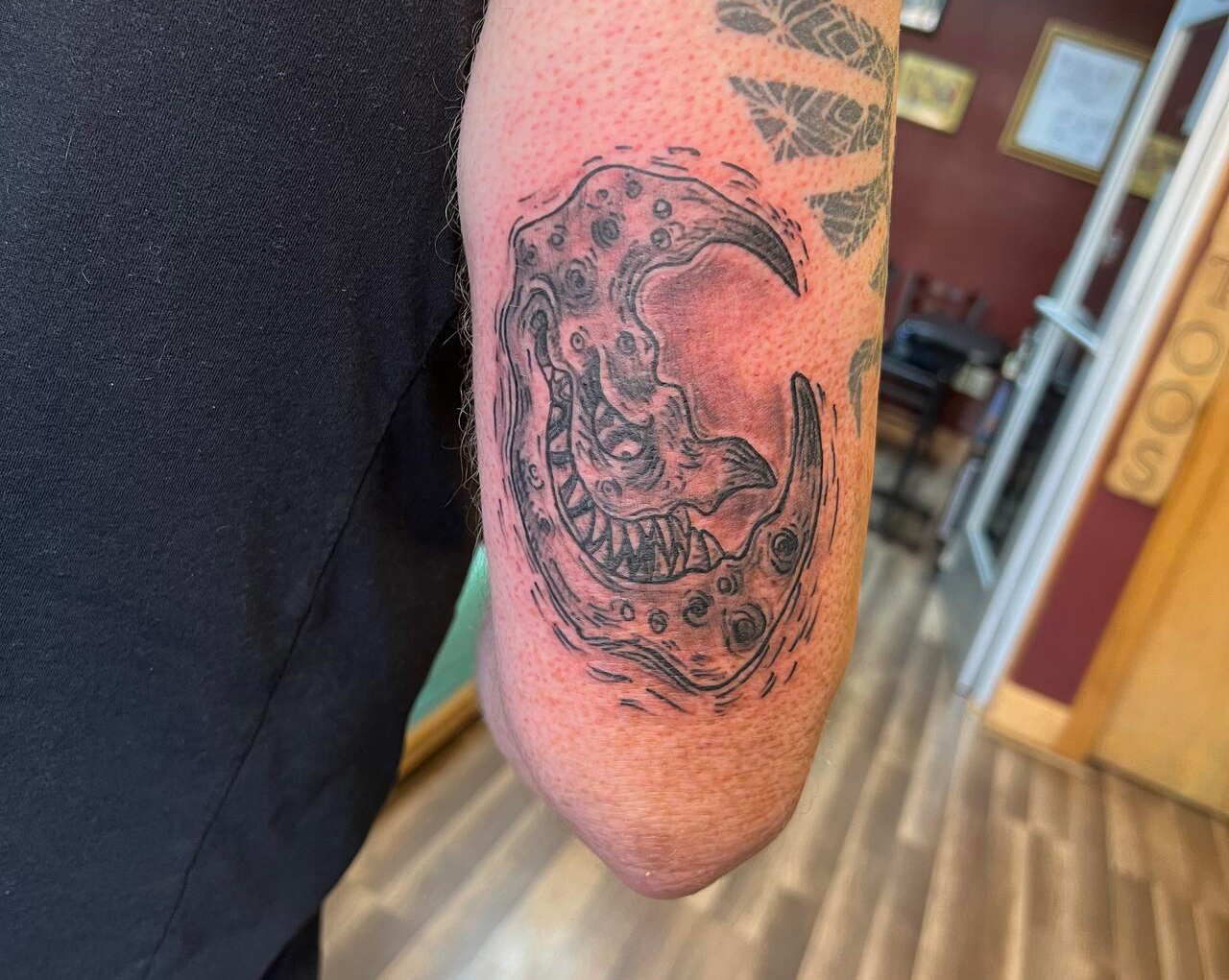
We kept the fun going at PAX. CK, our Director of Events, made a giant cutout of Spencer and invited attendees to design his next tattoo. The activity got people to stop by our booth. Plus, it opened the door to explain the tattoo’s backstory, further building social proof and brand awareness for both LaunchBoom and The Crooked Moon.
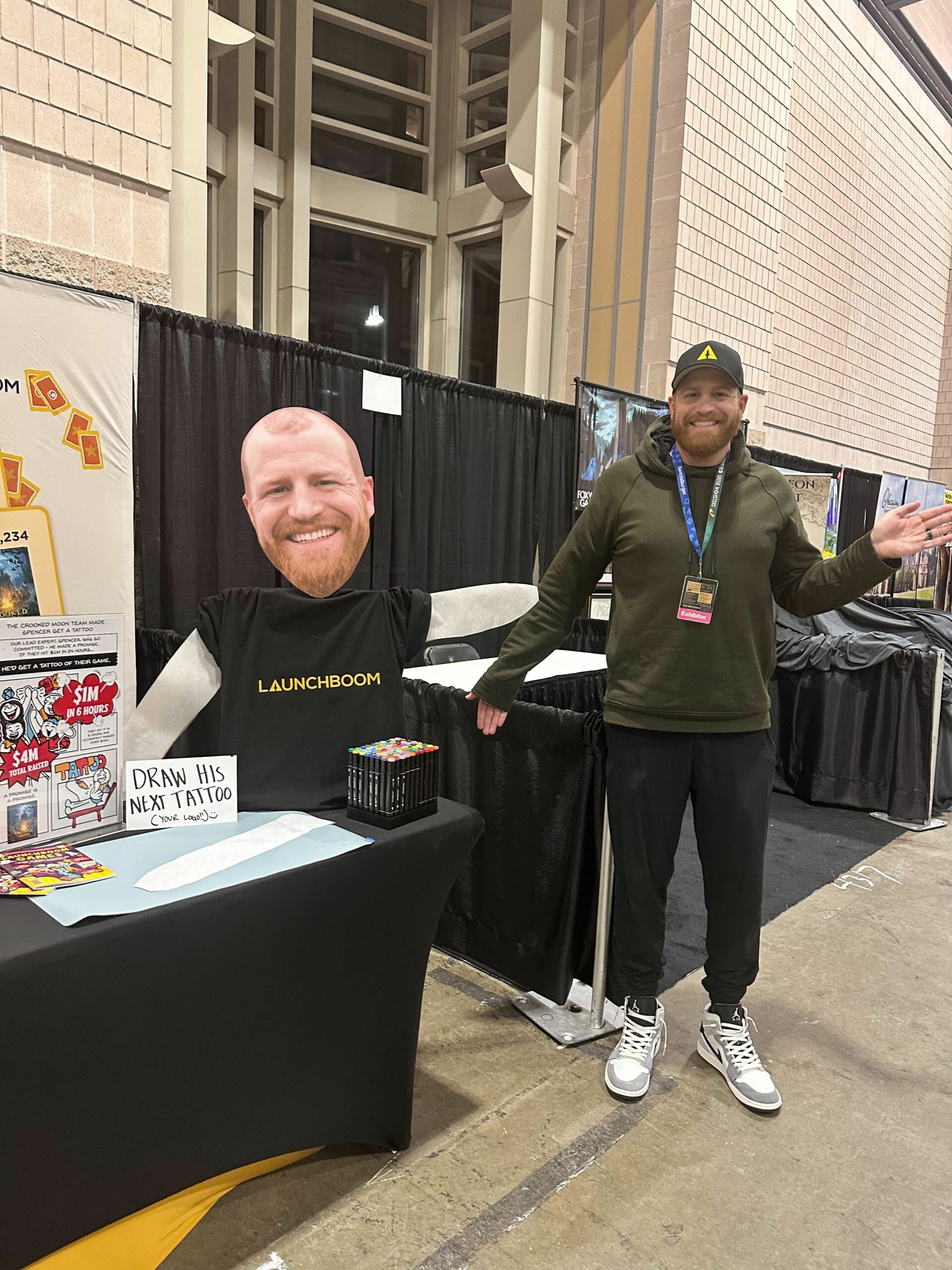
Social ads
Targeted ads get your product directly in front of your most promising audiences. To create compelling social ads, you need:
- Attention-grabbing imagery
- Engaging copy
Social ads should look natural in your viewer’s feed, while still eliciting enough curiosity for them to click. You don’t need professional camera work or Oscar-worthy performances for this. In fact, an overly polished image will immediately make viewers think “ad” and turn them off from your brand.
Same thing with your copy. Don’t be overly gimmicky or clever. Good copywriting is clear more than it is creative. Viewers won’t buy from you if they’re at all confused about what you’re trying to say.
Test multiple ads to start. Once you discover your best performing imagery and copy, keep scaling those ads while phasing out the assets that aren’t working.
How Alpha Clash leverages their social following to drive revenue
Here’s an ad from the Alpha Clash pre-launch campaign.
They kept the ad authentic and nonprofessional. The video is straightforward with a clear call to action. When the ad started performing well, they scaled up their ad spend. Here were their metrics:
Ad spend: $19,704.22
Leads: 8,303
VIPs: 1096
Cost / VIP: $21.89
Cost / lead: $2.37
When they launched on Kickstarter, they secured $183,304 in pre-orders in just the first day. That’s a 9.3x return on investment.
Multiple organic channels
Organic content is ideal for attracting and engaging customers without breaking the bank on advertising spend. But what it saves in dollars, it demands back in time and effort. It takes time to build a loyal following and establish yourself as an industry authority.
Post consistently across multiple organic channels. Send newsletters to your email list. Use Facebook, Twitter, and Instagram to announce campaign updates, shout out new backers, and celebrate milestones. Write blog posts to showcase your industry expertise. Be an active community member on BoardGameGeek, Reddit, Facebook, and Discord.
Reviews
Influencer marketing increases your visibility within relevant audiences. Reach out to board game reviewers, influencers, and bloggers inside your niche. A genuine review from a reputable reviewer builds a huge deal of credibility and trust among potential buyers.
The Key to Alpha Clash’s Successful Reviews Campaign
The Alpha Clash team sent their trading card game to reviewers on YouTube and asked for honest reviews. Not only did they expand our community, they gained shining endorsements from trusted third parties.
Check out some of those reviews here:
Goat Breakers
DMArmada
Funh0use Gaming
Leveraging crowdfunding for board game launch success
We’re always getting asked, “Why do you launch on Kickstarter or Indiegogo? Shouldn’t you just launch on your own website so you have more control?”
It’s simple. Crowdfunding platforms get millions of visitors every day. If you make it to the front page of Kickstarter or Gamefound, secure a newsletter feature, or win a Kickstarter “Project We Love” badge, you’ll get way more exposure than you could alone.
The challenge is, every other creator is also trying to climb the rankings. If you don’t gain traction fast, your campaign will quickly get buried. But if you invest in pre-launch advertising, events, organic content, and influencer strategy, the effects will multiply through your crowdfunding platform.
Why LaunchBoom is the only partner you need in board game crowdfunding
If you’re a first-time creator, this might feel like a lot to juggle. You’re developing a brand new game, creating and executing a marketing strategy, and building a customer base from scratch.
And so much can go wrong. 59% of crowdfunding projects fail.
Our biggest piece of marketing advice? Don’t try to do everything yourself. We’ve made crowdfunding our full-time job. We’ve raised $125 million in funding for creators all over the world. If you’re serious about bringing your game to life and building a long-term business, talk to an expert today.
Final thoughts
It’s an exciting time to be a board game creator. We’ve seen tremendous industry growth and a ton of beautiful, smart, creative games hit the market. But not everyone breaks into the industry. If you want to shatter records like The Crooked Moon or make waves like Alpha Clash, you need an effective marketing strategy.
Today, we covered:
- Benefits of developing a marketing strategy for your board game
- Strategies for marketing board games
- Case studies of marketing strategies for board games
Board game marketing strategy: Frequently asked questions
What is the best way to measure the success of my board game marketing strategy?
To measure the success of your marketing strategy, pay attention to these metrics:
- Landing page conversion rate
- Social media engagement, including likes, shares, views, and comments)
- Email open rate and click-through rate
- Cost per lead and cost per reservation
How important is video content in a board game marketing strategy?
Video content is super important to your marketing strategy. Your campaign video should be authentic, straightforward, compelling, and clear. It should showcase your key differentiators and tell viewers exactly why they should back your game. Additionally, create a UCG-style walkthrough video so viewers can get a sneak peek of your mechanics. User-generated content (UCG) is trending on social media because it feels less polished and more trustworthy and doesn’t scream “ad.”
Can influencer partnerships benefit board game marketing?
Influencer partnerships can definitely benefit your marketing. 8 out of 10 consumers have purchased a product after seeing it recommended by an influencer. And 36% of brands say influencer content outperforms branded content.
However, not every influencer is right for you. It’s better to find a smaller creator within your gaming niche than a well-known creator with a less relevant audience. When evaluating influencers, focus on the three R’s:
- Relevance: how much an influencer’s audience aligns with your brand/product
- Reach: the number of people who will be exposed to the message
- Resonance: the influencer’s ability to drive measurable results with their audience
What are the best practices for using social media in board game marketing?
Here are our best practices for using social media in board game marketing:
- Post consistently to maintain a social media presence
- Create content that your target audience finds interesting, relevant, and shareable
- Engage with your audience by staying on top of comments and direct messages
- Partner with influencers and reviewers to increase your reach
- Keep your community in the loop by sharing campaign updates, milestones, behind-the-scenes looks, and gameplay information
- Track your performance across platforms to gauge your best-performing content and scale accordingly




